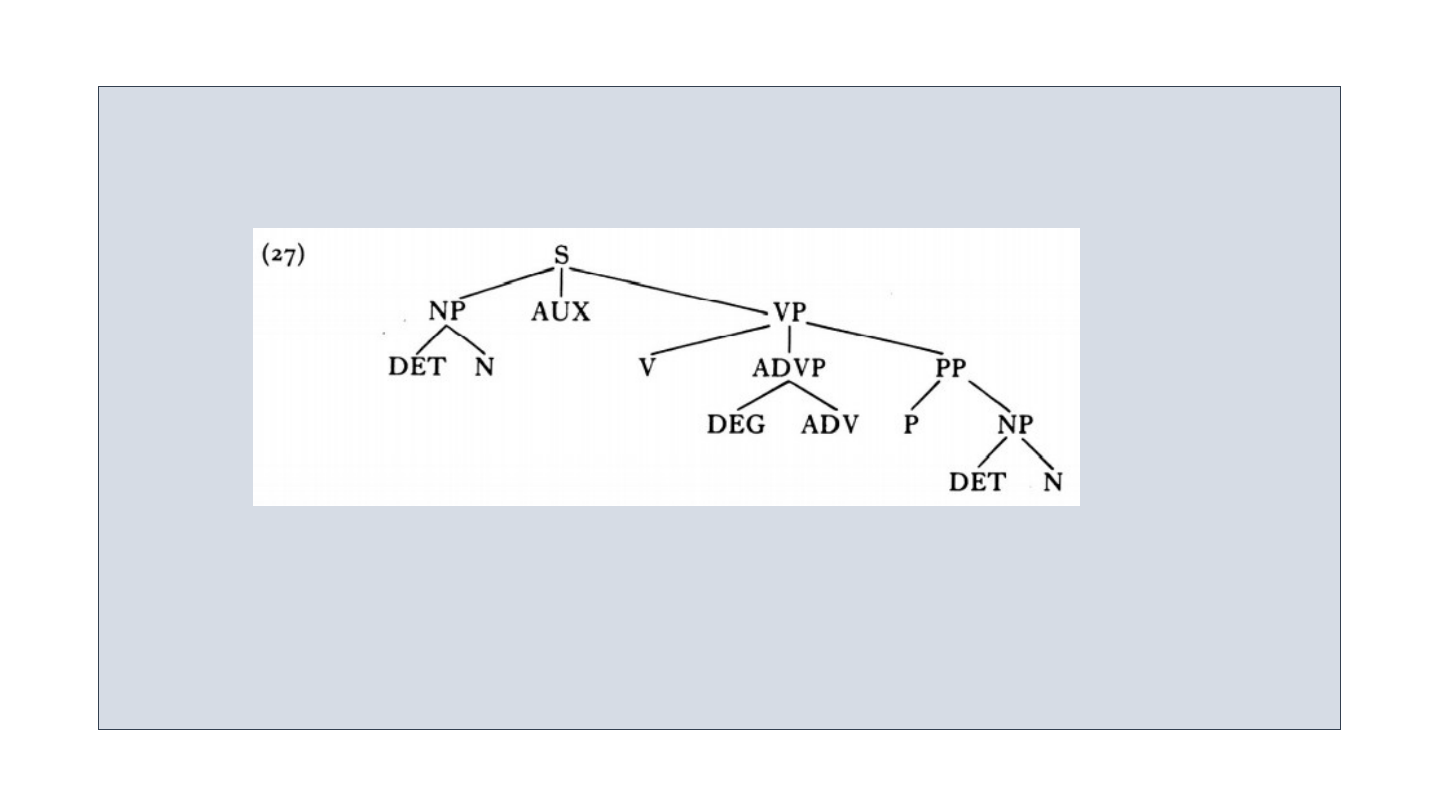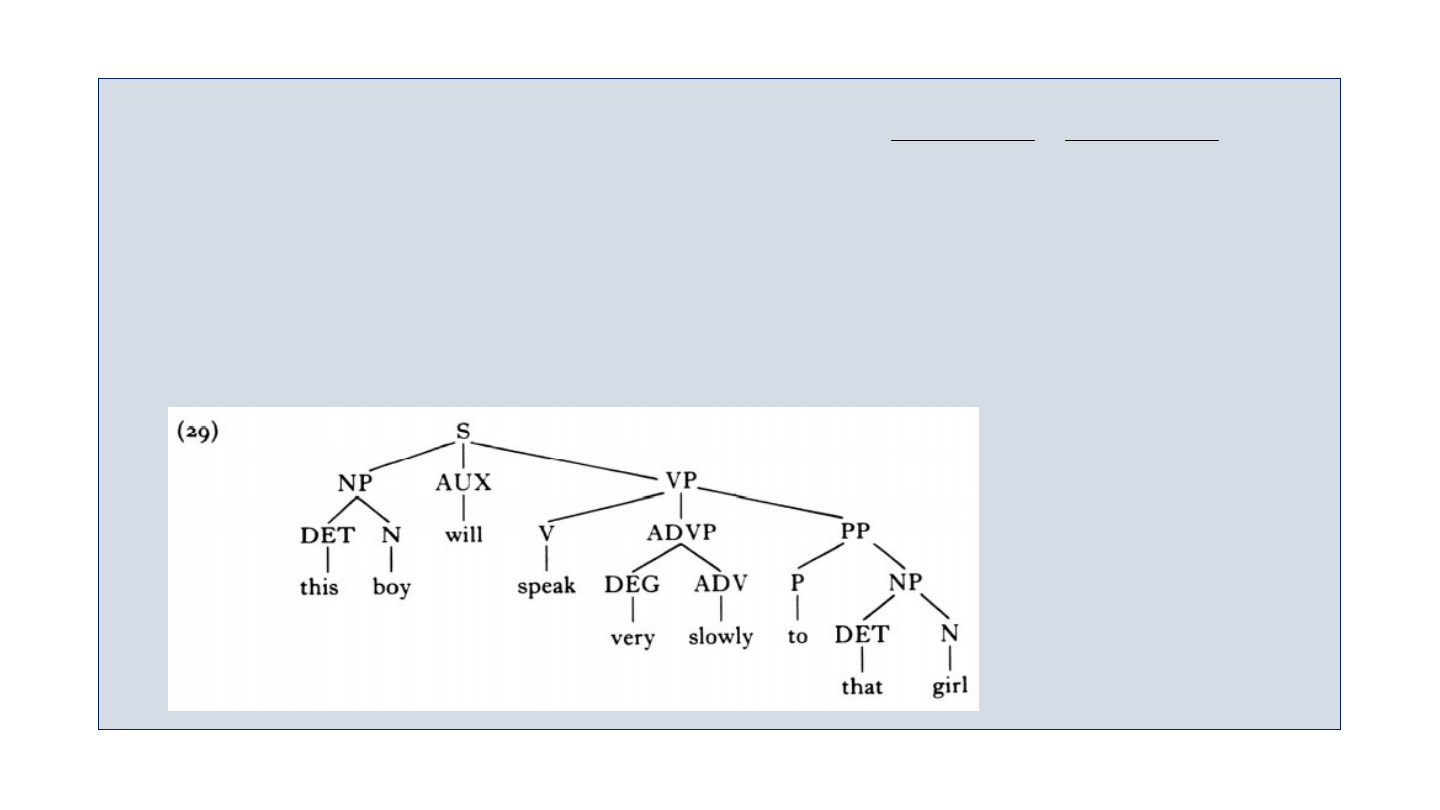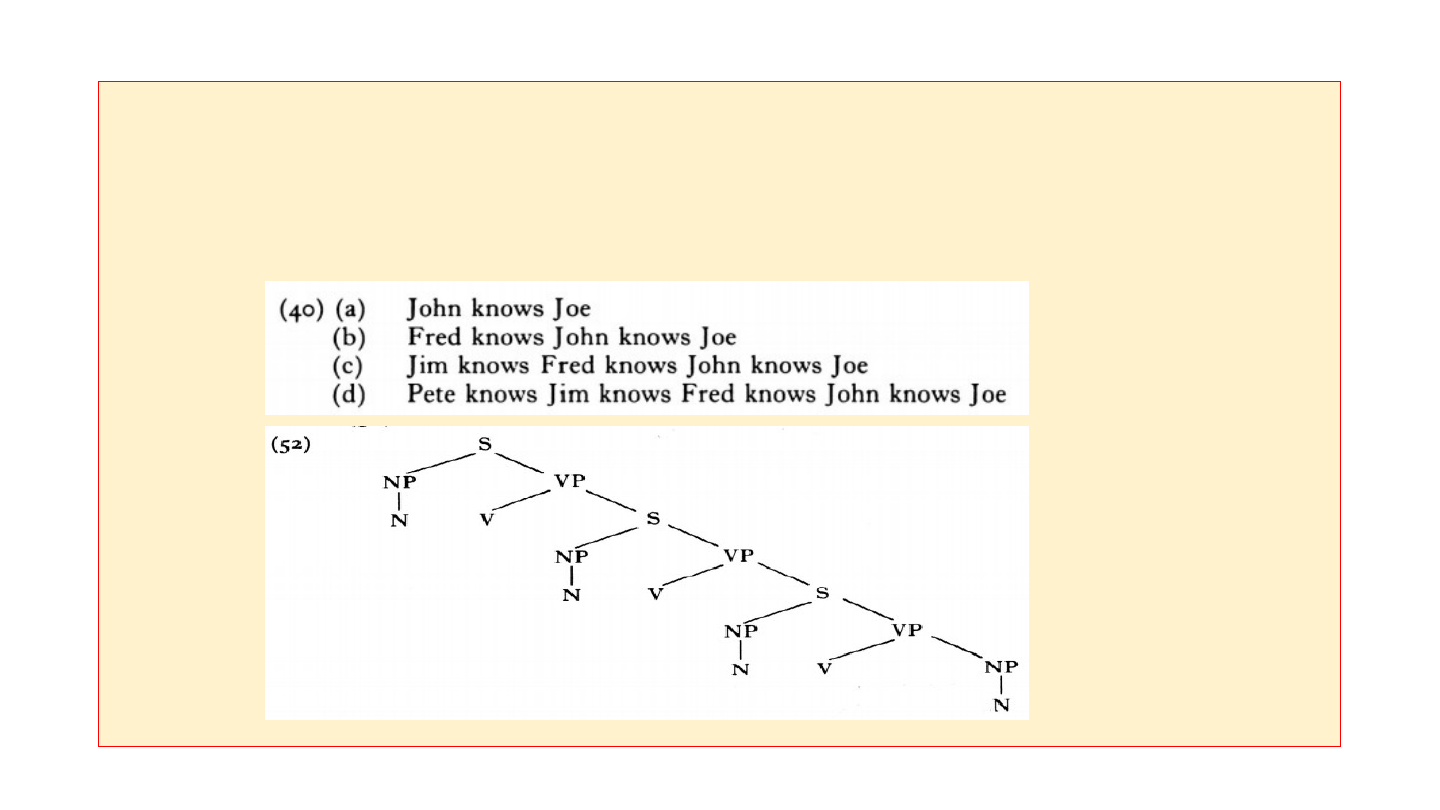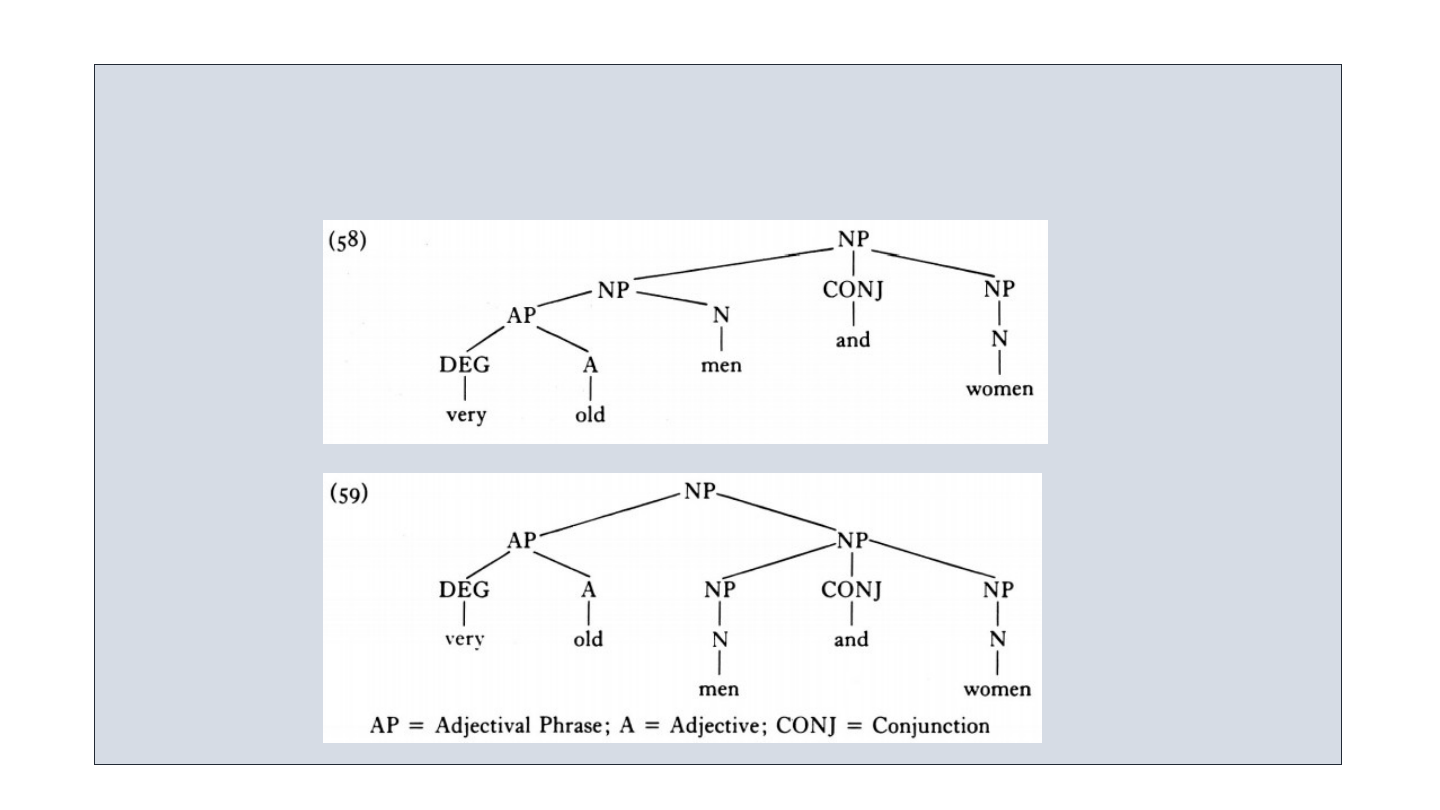
3. The tree structures such as (17) could be generated by a set of rules which
called
Phrase Structure Rules (or PS rules). They specify how sentences are struc-
tured
out of phrases, and phrases out of words.
Phrase Structure Rules: This can be called as Categorial Rules.

According to the Phrase Structure Rules(Categorial Rules) in (22),
we can derive the structure (27).
The syntactic component of our grammar contains a Lexicon(=dictionary). And the
Lexical Entry(=dictionary entry) for each such Lexical Item(=word) contains a
specification of the syntactic category that the word belongs to.
Finally, Lexical Insertion Rule can be applied to (27), and then (29) is produced.

(28) Our Lexicon contains the following entries: Lexical item Lexical entry
boy, girl N
slowly ADV
speak V
that, this DET
to P
very DEG
will AUX

4. Recursion:
For natural languages typically have the property that they allow recursion or iteration
categories – a process which can easily be handled in a category-based grammar.
Based on syntactic structures, we can generate a set of sentences recursively.

5. Ambiguity
Sentences that have a hierarchical constituent structure provide ambiguity characteristic of
natural languages: (i) lexical ambiguity, and (ii) structural ambiguity.
(i) Lexical ambiguity is ambiguity attributable to the fact that some particular lexical item
has more than one meaning.
e.g.) The word ‘ball’ is ambiguous as between one sense in which it means
a ‘round object’, and a second sense in which it means a ‘dance’.
(ii) Structural ambiguity does not lie in the words themselves. The ambiguity in
‘very old men and women’ rests on whether very old is taken as qualifying only men
or as qualifying the phrase men and women.

The phrase ‘very old men and women’ has two distinct constituent structures:
if very old is taken as qualifying only men, the structure (58) is produced; but
if very old qualifies the phrase men and women, the structure (59) produced.